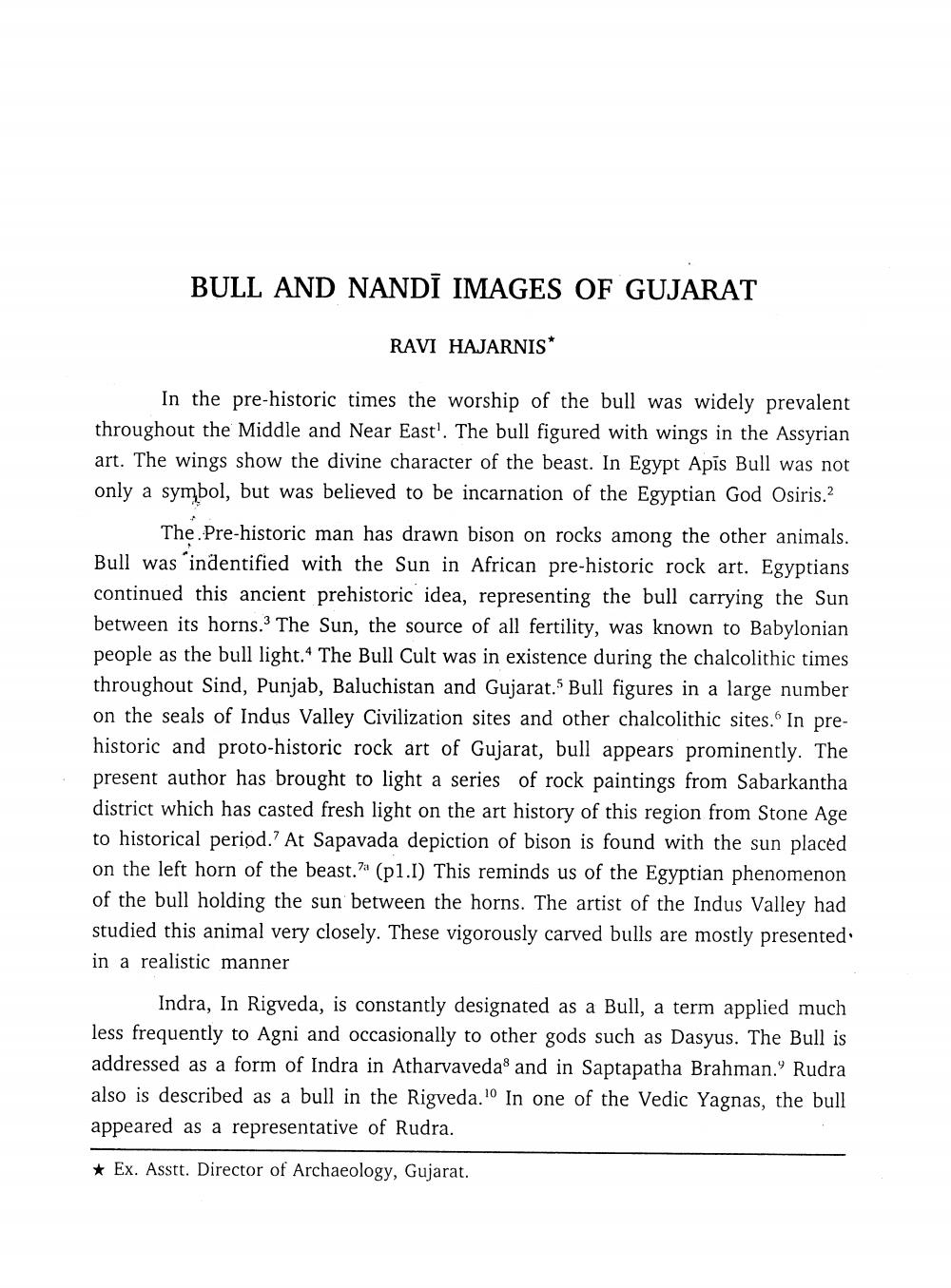________________
BULL AND NANDĪ IMAGES OF GUJARAT
RAVI HAJARNIS*
In the pre-historic times the worship of the bull was widely prevalent throughout the Middle and Near East! The bull figured with wings in the Assyrian art. The wings show the divine character of the beast. In Egypt Apis Bull was not only a symbol, but was believed to be incarnation of the Egyptian God Osiris.?
The Pre-historic man has drawn bison on rocks among the other animals. Bull was indentified with the Sun in African pre-historic rock art. Egyptians continued this ancient prehistoric idea, representing the bull carrying the Sun between its horns. The Sun, the source of all fertility, was known to Babylonian people as the bull light. The Bull Cult was in existence during the chalcolithic times throughout Sind, Punjab, Baluchistan and Gujarat." Bull figures in a large number on the seals of Indus Valley Civilization sites and other chalcolithic sites. In prehistoric and proto-historic rock art of Gujarat, bull appears prominently. The present author has brought to light a series of rock paintings from Sabarkantha district which has casted fresh light on the art history of this region from Stone Age to historical period.? At Sapavada depiction of bison is found with the sun placed on the left horn of the beast.7a (p1.1) This reminds us of the Egyptian phenomenon of the bull holding the sun between the horns. The artist of the Indus Valley had studied this animal very closely. These vigorously carved bulls are mostly presented in a realistic manner
Indra, In Rigveda, is constantly designated as a Bull, a term applied much less frequently to Agni and occasionally to other gods such as Dasyus. The Bull is addressed as a form of Indra in Atharvaveda and in Saptapatha Brahman. Rudra also is described as a bull in the Rigveda.0 In one of the Vedic Yagnas, the bull appeared as a representative of Rudra.
* Ex. Asstt. Director of Archaeology, Gujarat.




